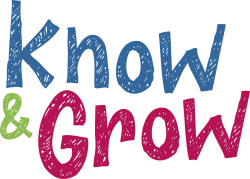Child Safety
Preventable injuries are the number one cause of death for children. Explore these resources about common child safety hazards, babyproofing your home, and how to prevent babies from safety risks and injuries.
- Injury topics information from Parachute Canada (e.g., burns and scalds, drowning, poisoning, choking, playground safety, winter safety)
- Prevent Child Injury website
- Child safety information and information about children on the farm from the Canadian Safety Council
- For Families – Ontario Poison Centre
- Sun safety
- Concussions
- Give your child a safe start video series (used with permission from Middlesex-London Health Unit)
Product safety and recalls
Injuries from the products you buy can be serious and sometimes fatal. Health Canada provides current information about products recalls and safety alerts. The Government of Canada also provides more specific information and tips about:
- Baby sling and carrier safety
- Batteries and magnets
- Cribs, cradles and bassinets
- Playpens
- Safety gates
- Stroller and carriage safety
- Suspended baby jumpers
- Toy safety tips
- Window covering safety
Car seat safety
Always follow car seat laws and regulations and make sure car seats are installed properly. Remember to read the instructions from the manufacturer and the child restraint section in your car owner’s manual. Download our Car Seat and Booster Seat pamphlet to learn more.
Southwestern Public Health does not conduct car seat clinics or safety checks. Learn about child car seat safety from Transport Canada, including choosing and installing a child car seat or booster seat, recall notices and safety information. You can also visit the Child Passenger Safety Association of Canada website to learn more or find a local technician for support.
| Car seat laws for children | ||||||||
| By law, children under the age of eight must be restrained in an appropriate car seat or booster seat based on their weight and height. If a child eight or older does not meet the criteria to safely use a seatbelt, they should remain in a booster seat. It is illegal to use a car seat that was not purchased in Canada. | ||||||||
| Register your car seat | ||||||||
| It is important to register your car seat with the manufacturer so they can let you know if there is recall or public notice on your child’s car seat. As soon as you know the car seat works in your vehicle and is the correct size and stage for your child, send in your registration card (attached to the car seat) or register online. | ||||||||
| Four stages of child car seat use | ||||||||
|
It is safest to keep your child in each of these stages for as long as possible. Visit Choosing a car seat or booster seat from Transport Canada to find in-depth information on each of the four stages.
|
Child safety resources for professionals
The Loop Junior Fall Prevention Community of Practice is a communication platform that provides education, training and evidence-based resources and information to professionals who work with children and parents.
Parachute Canada has developed injury prevention training resources for professionals including the areas of child safety and concussion recognition and management.
Need more support?
 Call our Know & Grow Line
Call our Know & Grow Line
Speak to a Public Health Nurse to get the answers to all the questions you never knew you had.
- In Oxford County, call the Know & Grow Line at 519-421-9901 x 3473
- In Elgin County, call the Know & Grow Line at 519-631-9900 x 1400















